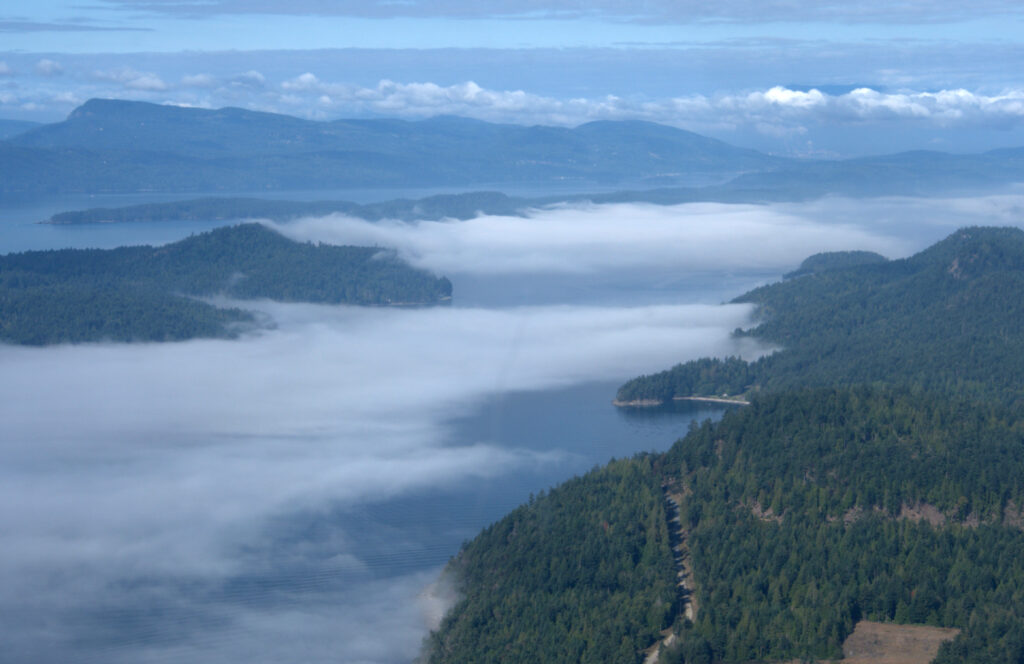For centuries, people around the world have been fascinated by the legend of Bigfoot, a mysterious and elusive creature that is believed to inhabit remote wilderness areas.
Despite countless sightings and reports of the creature, however, there is still much that we don’t know about Bigfoot, including where it is believed to live.
In this blog post, we will examine the various theories and reports about where Bigfoot is believed to live.
From traditional stories and cultural beliefs to modern theories and evidence, we will explore the various regions and ecosystems that have been proposed as potential habitats for the creature.
We will also discuss the ongoing debate and mystery surrounding the topic of Bigfoot’s habitat and the ongoing search for the creature.
Traditional beliefs about Bigfoot’s habitat

For centuries, various indigenous cultures around the world have told stories and legends about Bigfoot, or a creature similar to Bigfoot, that inhabit specific regions or ecosystems.
According to the Encyclopedia of Bigfoot and Other Cryptid Beings, the Native American Kwakiutl tribe, who lived in the Pacific Northwest, believed in a creature called the “Sasquatch,” which was said to inhabit the forests of the region.
Similarly, the Chinese legend of the “Yeren,” or wild man, describes a creature that is believed to live in the remote forests of China.
These traditional stories and cultural beliefs about Bigfoot’s habitat may have influenced later theories about where the creature is believed to live.
For example, the legend of the Sasquatch in the Pacific Northwest may have contributed to the popular belief that Bigfoot is most likely to be found in the forests of this region.
This belief has been further supported by a number of sightings and reports of Bigfoot in the Pacific Northwest, as well as physical evidence such as footprints and hair samples
Modern theories about Bigfoot’s habitat
In modern times, a wide range of regions and ecosystems have been proposed as potential habitats for Bigfoot, including forests, mountains, swamps, and other wilderness areas.
These suggestions are based on a variety of factors, including the presence of sightings and reports of Bigfoot, physical evidence such as footprints and hair samples, and the suitability of the region’s ecosystems and terrain for the creature.
Some of the most commonly cited habitats for Bigfoot include the Pacific Northwest, the Himalayas, and the Amazon rainforest.
These regions are known for their vast wilderness areas, varied ecosystems, and high number of Bigfoot sightings and reports.
Pacific Northwest
One of the primary pieces of evidence cited to support the theory that Bigfoot lives in the Pacific Northwest is the high number of sightings and reports of the creature in this region.
The Pacific Northwest, which encompasses parts of the states of Washington, Oregon, and California, is home to a vast network of forests, mountains, and wetlands, and it is believed to provide the perfect habitat for Bigfoot.
According to the Bigfoot Field Researchers Organization (BFRO), there have been over 1,300 Bigfoot sightings reported in the Pacific Northwest, making it one of the most active regions for Bigfoot activity in the world.
In addition to sightings and reports, there have also been a number of physical evidences that have been used to support the theory that Bigfoot lives in the Pacific Northwest.
These include footprints, hair samples, and vocalizations that have been found in the region and are believed to be evidence of the creature’s presence.
For example, the BFRO has collected numerous Bigfoot footprints from the Pacific Northwest, which have been analyzed and compared to known animal tracks in the region.
The Himalayas
The Himalayas, which stretch across several countries in Asia, have also been proposed as a potential habitat for Bigfoot.
The high peaks and remote forests of the Himalayas are home to a number of unknown species and have long been a source of mystery and legend.
The famous Bigfoot print discovered by Eric Shipton in the Himalayas in 1951 is often cited as evidence of the creature’s presence in this region.
While some experts and researchers believe that the print is genuine evidence of Bigfoot in the Himalayas, others are more skeptical and argue that it could be the result of a hoax or an unknown animal.
Amazon Rainforest

The Amazon rainforest, which spans across several countries in South America, is another region that has been proposed as a potential habitat for Bigfoot.
The dense forests and vast wilderness of the Amazon are home to a staggering array of plants and animals, and it is believed that there could be many unknown species that have yet to be discovered.
Some researchers argue that the sightings and reports of Bigfoot in the Amazon, as well as physical evidences such as footprints and hair samples, are evidence of the creature’s presence in this region.
There have been numerous sightings and reports of Bigfoot in the Amazon rainforest, including eyewitness accounts and videos that purport to show the creature in the region.
In addition, there have been a number of physical evidences that have been used to support the theory that Bigfoot lives in the Amazon, including footprints, hair samples, and vocalizations.
However, like with other proposed habitats for Bigfoot, there are also skeptics who argue that these sightings and evidences could be the result of hoaxes or misidentifications, and that there is no conclusive proof that Bigfoot exists in the Amazon or any other region.
Overall, the question of where Bigfoot lives is a topic of ongoing debate and mystery.
While some believe that the creature is most likely to be found in the forests of the Pacific Northwest, the Himalayas, or the Amazon rainforest, others argue that it could potentially inhabit other regions or ecosystems.
Conclusion
The question of where Bigfoot lives is a topic of ongoing debate and mystery.
From traditional beliefs about the creature’s habitat to modern theories and evidence, there are a wide range of regions and ecosystems
that have been proposed as potential habitats for the creature.
While some believe that Bigfoot is most likely to be found in the forests of the Pacific Northwest, the Himalayas, or the Amazon rainforest, others argue that the creature could potentially inhabit other regions or ecosystems.
Despite the various theories and reports about Bigfoot’s habitat, there is still much that we don’t know about the creature and its whereabouts.
Some researchers and enthusiasts continue to search for evidence of Bigfoot and try to uncover its true habitat, while others are more skeptical and argue that the creature is likely a myth.
Regardless of where you stand on the question of Bigfoot’s existence, one thing is clear: the mystery and fascination surrounding this enigmatic creature will likely continue for years to come.
So where does Bigfoot live?
The answer to that question remains a mystery, but one thing is certain: the search for Bigfoot and the ongoing debate about its habitat is a testament to the enduring allure and fascination with this mysterious creature.
Whether you are a believer or a skeptic, there is no denying the appeal of Bigfoot and the mystery surrounding its existence and habitat.

